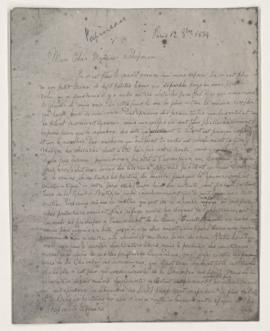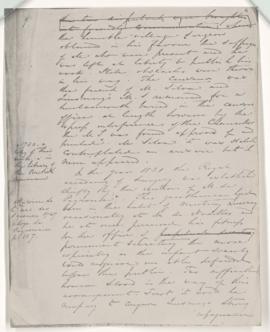McGill Library
McLennan Library Building3459 rue McTavish
Montreal, Quebec
H3A 0C9





Henry S. Chapman Collection
Collection
8 cm of photostats
Henry Samuel Chapman was born on July 21, 1803, in Kennington, London, England. He was an Australian and New Zealand judge, colonial secretary, attorney-general, journalist, and politician. After attending schools in Bromley and London, he emigrated to Quebec, Canada, in 1823. Following ten years of reasonable success in business, he turned to journalism. In 1833, he co-founded the radical Montreal Daily Advertiser, the first daily paper published in Canada. Chapman returned to England in 1835 as a salaried intermediary between the Legislative Assembly of Lower Canada and its friends in the House of Commons of the United Kingdom. He studied law in the late 1830s and was admitted to the bar of the Middle Temple in 1840. The same year he began publishing the New Zealand Journal. In 1843, he sailed to New Zealand where he held the position of judge of the supreme court for the southern district (1843-1852). In 1857, he was named Attorney-General and retained this office until 1859. In 1860, Chapman was a lecturer in law at the University of Melbourne. In 1864, he was appointed a judge of the Supreme Court of New Zealand, at Dunedin. He retired in 1875 taking up commerce and sheep farming in Central Otago. In 1840, he married Catherine (Kate) Delancey Brewer (1810–1866). In 1866, she and two of his six sons and his only daughter drowned when the passenger ship SS London was wrecked in the Bay of Biscay. In 1868, he remarried Selina Frances Chapman (1823-1902). He died on December 27, 1881, in Dunedin, New Zealand.
This collection reflects Henry S. Chapman's relationships with a number of important figures in Montreal's political and business history, between roughly 1833 and 1853, the period following Chapman's return to London. A significant amount of the material in this collection is related to the 1837-1838 Upper and Lower Canada Rebellions (especially in Montreal), as well as events occurring immediately after the uprisings.
Consists of copies of original material, chiefly correspondence, arranged roughly by date. The contents of letters (1835-1853) include business partnerships, political reform, and personal news. Significant correspondents include Louis-Joseph Papineau, Louis-Hippolyte La Fontaine, Jacob Dewitt, François-Antoine Larocque (of Laroque and Bernard), Joseph Perreault, and Edmund Bailey O’Callaghan. There is also a partial manuscript on Canadian history and pages from a scrapbook, both dating from the 1830s.
Received in 1914 from Judge Chapman, Wellington, New Zealand, through the offices of Arthur George Doughty, Public Archives of Canada, Ottawa
Also described in the McGill Libraries catalogue.
Information on the source of immediate acquisition from the Minutes of the Library Committee, 12 October 1914, page 90.